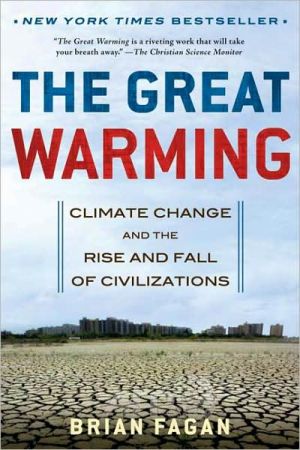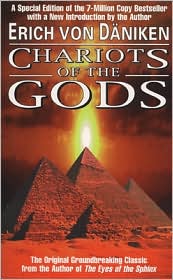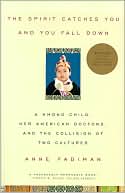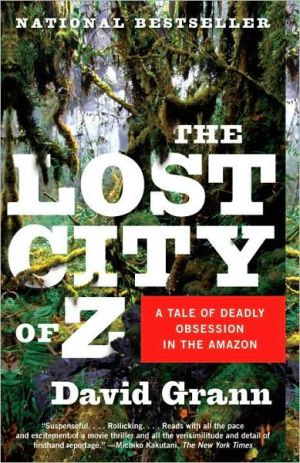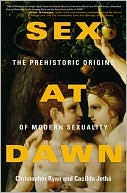Great Warming: Climate Change and the Rise and Fall of Civilizations
A breakout bestseller on how the earth’s previous global warming phase reshaped human societies from the Arctic to the Sahara—a wide-ranging history with sobering lessons for our own time.\ From the tenth to the fifteenth century the earth experienced a rise in surface temperature that changed climate worldwide—a preview of today’s global warming. In some areas, including western Europe, longer summers brought bountiful harvests and population growth that led to cultural flowering. In the...
Search in google:
A breakout bestseller on how the earth’s previous global warming phase reshaped human societies from the Arctic to the Sahara—a wide-ranging history with sobering lessons for our own time. From the tenth to the fifteenth century the earth experienced a rise in surface temperature that changed climate worldwide—a preview of today’s global warming. In some areas, including western Europe, longer summers brought bountiful harvests and population growth that led to cultural flowering. In the Arctic, Inuit and Norse sailors made cultural connections across thousands of miles as they traded precious iron goods. Polynesian sailors, riding new wind patterns, were able to settle the remotest islands on earth. But in many parts of the world, the warm centuries brought drought and famine. Elaborate societies in western and central America collapsed, and the vast building complexes of Chaco Canyon and the Mayan Yucatán were left empty. The history of the Great Warming of a half millennium ago suggests that we may yet be underestimating the power of climate change to disrupt our lives today—and our vulnerability to drought, writes Fagan, is the “silent elephant in the room.” The New York Times - William Grimes …[a] fascinating account of shifting climatic conditions and their consequences from about A.D. 800 to 1300, often referred to as the Medieval Warm Period…Mr. Fagan, an anthropologist who has written on climate change in The Long Summer and The Little Ice Age, proceeds methodically, working his way across the globe and reading the evidence provided by tree rings, deep-sea cores, coral samples, computer weather models and satellite photos. The picture that emerges remains blurry…but it has sharpened considerably over the past 40 years, enough for Mr. Fagan to present a coherent account of profound changes in human societies from the American Southwest to the Huang He River basin in China.
\ The Great Warming \ \ By Brian Fagan Bloomsbury \ Copyright © 2008 \ Brian Fagan\ All right reserved.\ \ ISBN: 978-1-5969-1392-9 \ \ \ Chapter One A Time of Warming\ The occurrence in medieval York of the bug Heterogaster urticae, whose typical habitat today is stinging nettles in sunny locations in the south of England, discovered by ... archaeological investigation to have been present there in the Middle Ages ... presumably indicates higher temperatures than today's. -Hubert Lamb, Climate History and the Modern World (1982)\ Southern England, Fall, A.D. 1200. The chilly mist hangs low over the treetops. A pervasive drizzle drifts across the plowed strips, misting the weathered faces of the two men sowing wheat from canvas seed bags slung around their necks. Snub-nosed and tousle-haired, they are barefoot, clothed in dirty, belted tunics and straw hats, swinging effortlessly to and fro, casting seed across the shallow furrows. Behind them, an ox-drawn harrow, a square wooden frame with wooden spikes pointing into the earth, covers the newly planted seed. As one strip is sown, the men move on to the next, for time is short. They must plant before heavy autumn rains can wash the seed from the earth.\ The routine of planting, learned in childhood, is as unchanging as the passage of the seasons. Older men remember cold, dreary days when even a sheepskin cloak could not keep out the pervasivechill. They also recall years when the sun blazed down from a cloudless sky, the heat shimmering above the fields. These were times when the village gambled that it would rain and planted anyhow. Sometimes, the bet paid off. All too often, it did not. When it didn't, there would be hunger the following year.\ Their seed bags empty, the two men stretch and sling new ones from their shoulders. They're tired after days of backbreaking labor, harvesting summer crops, then plowing and planting for winter wheat. The work never ceases in a farming world where everyone lives on the edge, where the unspoken threat of hunger is ever present.\ The village is coming off a good summer harvest after weeks of fine weather, so there is plenty to eat. Good fortune continues. The winter is mild and not too wet. January and February bring frost, even a little snow; but there are no late cold snaps, and spring is early, with warm temperatures and just enough gentle rain. As the days lengthen, the villagers weed the growing crop. By late July, the grain is ripe and the harvest begins. The fields bake in the hot sun, a deep blue sky with fluffy clouds overhead. The men bend to the harvest. They reap the ripe wheat with short iron sickles, gathering bundles of stalks in their hands and cutting them, only pausing to sharpen their blades. Behind them, the women have tucked their skirts into their belts to free their legs. Brightly colored cloths cover their hair. They bind and stack the sheaves in the field, but soon the grain will be carried indoors, stored on the stalk for threshing and winnowing under cover when the weather turns bad. Children play among the sheaves and gather grain among the stubble. The workers pause at midday to stretch their stiff backs, to drink some ale, as birds jostle and swoop overhead. Soon the harvest will resume, continuing until dark as the village races against time to gather in the crop while it is dry.\ To judge by today's subsistence farmers, those of A.D. 1200 would let nothing go to waste, even in a good harvest year like this one. You have only to glance at the deep wrinkles etched into adult faces to get the point. Even men and women in their twenties look old, their countenances withered by brutal hard work and occasional hunger or malnutrition. Yet these people lived in a world that was warmer than it had been for some centuries, in what climatologists call the Medieval Warm Period.\ A Thousand Years ago, everything in Europe depended on agriculture. From Britain and Ireland to central Europe, 80 to 90 percent of the population struggled to coax a living-and, if they were lucky, a food surplus-from the soil. Europe was a continent of subsistence farmers, who lived from harvest to harvest, whose fate depended on the vagaries of temperature and rainfall.\ There were many fewer people then. The population of London exceeded 30,000 for the first time in 1170, a vast metropolis by the standards of the day. Other English population centers were much smaller. Norwich in East Anglia, for example, had but 7,000 to 10,000 inhabitants. The combined population of France, Germany, Switzerland, Austria, and the Low Countries was about 36 million in 1200, compared with over 250 million today. Nearly all these people lived in hamlets and villages, or perhaps small towns, for cities were only just becoming a significant element in European life. And everyone, even the greatest lord, depended on a countryside farmed without machines, hybrid seed, or fertilizers. Horses and oxen, even wives, hauled the plow and the harrow. The harvest was gathered by hand, carried on people's backs, perhaps transported by oxcart or river barge to market.\ The rural landscape was a mosaic of forest and woodland, river valley and wetland, modified constantly by human activity. Many people lived in small, dispersed settlements, surrounded by haphazard fields. But increasingly, they dwelled in larger, more centralized villages, where the nearby arable land was divided into large, open fields in turn subdivided into small strips of about a half acre (0.2 hectare) each. Each tenant had possession of several groups of strips, often called furlongs, but not all of that land was under crops at once. Every farmer knew that arable land had to be grazed and manured by animals, then rested to regain its fertility and minimize plant diseases. The best-drained, lightest soils supported cereal crops. Animals grazed not only on stubble, but in the woods and in open pasture on heavier, more clayey soils. Like modern-day subsistence farmers in Africa, medieval European peasants knew the properties of different grazing grasses, the subtle indicators of renewed soil fertility, the seasons of wild plant foods. Their only protection against sudden frosts, storms, or drought was a diverse food supply based on far more than cereal crops.\ Coaxing a living from Europe's medieval soils was never easy, but it was done, and sometimes with considerable success, especially during runs of warm, drier summers. Farmers in England and France grew mainly wheat, barley, and oats. As a gross generalization, about a third of the land was planted in wheat, half in barley, the rest in other crops, including peas. Even in good years, the yields were small by today's standards. A good wheat harvest would yield between 8 and 12.5 bushels (2.8 to 4.0 hectoliters) per acre (0.4 hectare). Compare this with today's figure of over 47 bushels (16.5 hectoliters) an acre. When you realize that 2.3 bushels (0.8 hectoliters) of that yield went back into the soil as seed for the next crop, the yield was small indeed, leaving very little chance of a food surplus in any but the best years. The figures for barley, used for beer, were somewhat higher (23.5 bushels/8.3 hectoliters), but the amount of seed planted was greater. In good years, grain yields of slightly under four times seed grain sown were the norm. One survived by diversification.\ Everyone grew vegetables. Protein-rich peas and beans were planted as field crops in early spring and harvested in fall; the legumes were allowed to dry on the plant, the stalks plowed back into the soil as fertilizer. Vegetables and herbs of all kinds supplemented what was basically a meatless diet based on bread and gruel.\ Most farmers had a few head of livestock-a milk cow or two, some pigs, sheep, goats, and chickens, and, if they were lucky, a horse or some oxen, or at least access to them for plowing. Animals provided meat and milk, also hides and wool. Sheep shearing was an important occasion in spring, undertaken on a carefully chosen fine day when a warm wind from the west brought promises of summer. The breeze sends wood smoke cascading out of windows and doors, opened by the women to let in fresh air. Outside, the village flock crowds in a large wicker pen, sheep jostling against one another. A smell of wool fills the air. The men, dressed in leather jerkins, grab the sheep one by one and shear them with simple iron clippers, deftly flipping the docile beasts on their backs to complete the task. The shorn, bewildered beasts shake themselves as young boys drive them to a nearby corral. Hovering children gather up the wool and lay it on wooden racks to dry in the bright sunlight.\ Most of the year, animals grazed and foraged on their own-this was especially true of pigs, which feasted off acorns and beechnuts in the fall. But winter feeding was another matter, the challenge being to keep breeding stock alive. Surplus males and dried-up cows no longer yielding milk were either sold or slaughtered in the autumn to free up hay for the most valuable animals. The hay harvest was all-important. Mowing began in June and continued into July, depending on the weather, for the hay had to be absolutely dry, lest it rot after harvest and become so hot that it would catch fire. On fine days, men with long-bladed iron scythes worked their way across a meadow, leaving the crop to dry in rows across the field. They would return and turn the crop over a couple of times to dry better before stacking it in such a way that the outer layer formed a thatch to keep off the rain. The hay harvest was a major event in the year but so dependent on dry conditions that a wet year could lead to stock losses the next winter, perhaps the loss of every beast. Once again, everything depended on the climate.\ Even in a bad year, the farmer still had to pay taxes and church tithes, which ate into food supplies. A man with a wife and two children could survive at a basic level with 5 acres (2 hectares). But everyone, even young children, had to grow vegetables and forage for wild foods such as mushrooms, nuts, and berries. Five acres left precious little margin for poor harvests caused by frost or storms. A succession of years meant famine, famine-related diseases, at best malnutrition, and certainly some dying, especially in the cold and miserable months of late winter, when food supplies were always low and Lent with its fasting was just over the horizon.\ Each year, as summer ripened into fall, every community reaped its harvest and gave thanks to God for his bounty, for life was never easy. The endless cycle of the seasons defined human existence. So did the routines of planting, growth, and harvest; the verities of birth, life, and death; and what everyone believed were the arbitrary whims of the Lord.\ In an era long before long-range weather forecasting, everyone, whether king or noble, warlord, merchant, or farmer, was at the mercy of cycles of heavier rainfall and drought, savage gales and perfect summer days. They were unwitting partners in an intricate climatic gavotte between the atmosphere and the oceans. But, especially between A.D. 800 and 1300, the dance slowed slightly into a measured waltz, where summer warmth and more settled conditions tended-and one stresses "tended"-to be the norm. The gyrations of climate change slowed momentarily. Europe changed profoundly during these five centuries from 800 to 1300, the Medieval Warm Period.\ In the larger scheme of things, the twenty generations or so of medieval warming are but the blink of an eye. The relatively minor temperature changes of these centuries pale alongside those that occurred at the end of the most recent ice age. About twelve thousand years ago, the world entered a period of sustained global warmth, known to geologists as the Holocene (after the Greek words holos, "whole," and kainos, "new," the word thus meaning "entirely recent"), which continues to this day. Generations of scientists, working with inadequate data, conjured up images of over ten millennia of a basically modern climate that had changed relatively little since the warm-up after the Ice Age. But a revolution in paleoclimatology, the study of ancient climate, has transformed our knowledge of the Holocene in recent years.\ Today's climatologists drill into sea and lake beds, take deep cores from Greenland and Antarctic ice sheets, and pore over tree-ring sequences taken from the trunks of ancient trees. Their research has revealed a Holocene climate constantly on the move. We can now discern not only millennium-long cold and warm oscillations, but also much shorter cycles, especially over the past two thousand years. The shifts from slightly wetter to slightly drier, from warmer to cooler and back again, never cease. Some endure a century or a decade; others, like El Niño events, last no more than a year or so. Few major climatic events lay within the span of generational memory, and were thus quickly forgotten in times when life expectancy everywhere was little more than thirty years. The new climatology has shown us that the climatic timepiece may accelerate and slow down, falter and change direction suddenly, even remain steady for long periods of time, but it never stops.\ No one knows exactly what drives the climatic pendulum. Most likely, small changes in the earth's obliquity trigger climate changes. So do cycles of sunspot activity. For instance, a dearth of sunspots during the seventeenth century marked a period of markedly cooler climate during the height of the so-called Little Ice Age. There are other climatic forcing agents, too, among them volcanic activity in Iceland, Southeast Asia, and elsewhere. A massive eruption of Mount Tambora on Java's Sumbawa Island in 1815 blew off 4,250 feet (1,300 meters) of the summit of the volcano. Huge clouds of volcanic ash rose into the atmosphere, masking the sun and causing Europe's celebrated "year without a summer" in 1816. In recent years, however, most climatologists have come to believe that complex, yet still little understood, interactions between the atmosphere and the ocean play a major role in climatic shifts. The climatologist George Philander calls it a dance between very different partners, one fast-moving, and the other clumsier. He writes: "Whereas the atmosphere is quick and agile and responds nimbly to hints from the ocean, the ocean is ponderous and cumbersome." 4 We dance along with these partners, opportunistically, sometimes decisively, and very often with reluctance.\ We've learned, too, that the gyrations of the climatic dance have a startlingly direct effect on human societies, like the exceptionally heavy rains caused by a massive El Niño that destroyed generations' worth of irrigation canals in riverbeds along Peru's north coast in the sixth century A.D., or the major drought cycles in the American Southwest that triggered population movements by Ancestral Pueblo families over a wide area a thousand years ago. At the same time as the Pueblo of the Southwest were moving away from their homes in the face of drought, Europe's medieval farmers were basking in more predictable weather conditions and ample, but usually not excessive, rainfall. The effects of the slightly warmer and drier conditions appeared in all kinds of subtle ways-in better harvests, in population growth and accelerating deforestation, in an explosion of trade and deep-sea fishing, and in a veritable orgy of cathedral building. This is not to say, of course, that greater warmth caused all these changes; far from it. What's exciting is that we can now begin to link seemingly minor climatic shifts to all kinds of historical events in ways that were unimaginable even a generation ago. With a few notable exceptions, like the Swiss historian Karl Pfister, who has spent years studying the dates of wine harvests, most historians have tended to ignore climatic shifts, largely because as nonscientists they were unversed in the new climatological data. Today, we can see that climate change was one of many significant factors involved in shaping medieval history, especially the lives of ordinary people living in small villages, growing crops, or fishing in the North Sea.\ (Continues...)\ \ \ \ \ Excerpted from The Great Warming by Brian Fagan Copyright © 2008 by Brian Fagan. Excerpted by permission.\ All rights reserved. No part of this excerpt may be reproduced or reprinted without permission in writing from the publisher.\ Excerpts are provided by Dial-A-Book Inc. solely for the personal use of visitors to this web site.\
Preface ixAuthor's Note xix1 A Time of Warming 12 "The Mantle of the Poor" 223 The Fail of God 464 The Golden Trade of the Moors 665 Inuit and Qadlunaat 876 The Megadrought Epoch 1067 Acorns and Pueblos 1208 Lords of the Water Mountains 1389 The Lords of Chimor 15510 Bucking the Trades 17311 The Flying Fish Ocean 19412 China's Sorrow 21313 The Silent Elephant 228Acknowledgments 243Notes 245Index 263
\ William Grimes…[a] fascinating account of shifting climatic conditions and their consequences from about A.D. 800 to 1300, often referred to as the Medieval Warm Period…Mr. Fagan, an anthropologist who has written on climate change in The Long Summer and The Little Ice Age, proceeds methodically, working his way across the globe and reading the evidence provided by tree rings, deep-sea cores, coral samples, computer weather models and satellite photos. The picture that emerges remains blurry…but it has sharpened considerably over the past 40 years, enough for Mr. Fagan to present a coherent account of profound changes in human societies from the American Southwest to the Huang He River basin in China.\ —The New York Times\ \ \ \ \ ForbesThere are optimists who, upon reading the opening chapters of this new book about the warming trend that gripped the planet from the 9th to the 14th centuries A.D., will be tempted to conclude that our current predicament isn't all bad. And to a degree, they'd be right. Take the peasants of Western Europe. For them, higher temperatures meant longer summers, bigger harvests and a nice break from centuries of near-starvation. The cathedral of Charters, the author points out, was a direct product of global warming, financed by the boom-time donations of local farmers. Melting ice allowed Norse sailors to open lucrative trade routes with Inuits in Greenland, while Polynesians harnessed shifting winds to colonize faraway islands. Then there's Genghis Khan. His bloody rampage across the Asian continent happened in no small part because the grasslands of the Mongolian steppes grew too parched for his people to graze their horses there. Which brings us to the real side of global warming: According to Fagan, it's not tsunamis or hurricanes we should be fretting about, it's drought. Harnessing a variety of research tools available to archeologists and climatologists-tree ring studies, deep-sea and pollen cores, ice borings and even human bone analyses-Fagan reconstructs a worldwide wave of pitiless, prolonged droughts that struck large swaths of Asia, Australia, Africa and the Americas. The Mayan civilization partially collapsed during the period, mainly for lack of water, while numerous other cultures splintered or declined. As for North America, let's just say that the most popular place to be. If history any guide, the folks in L.A., Tucson and Phoenix might want to start thinking about, say,Albany.—Thomas Jackson\ \
